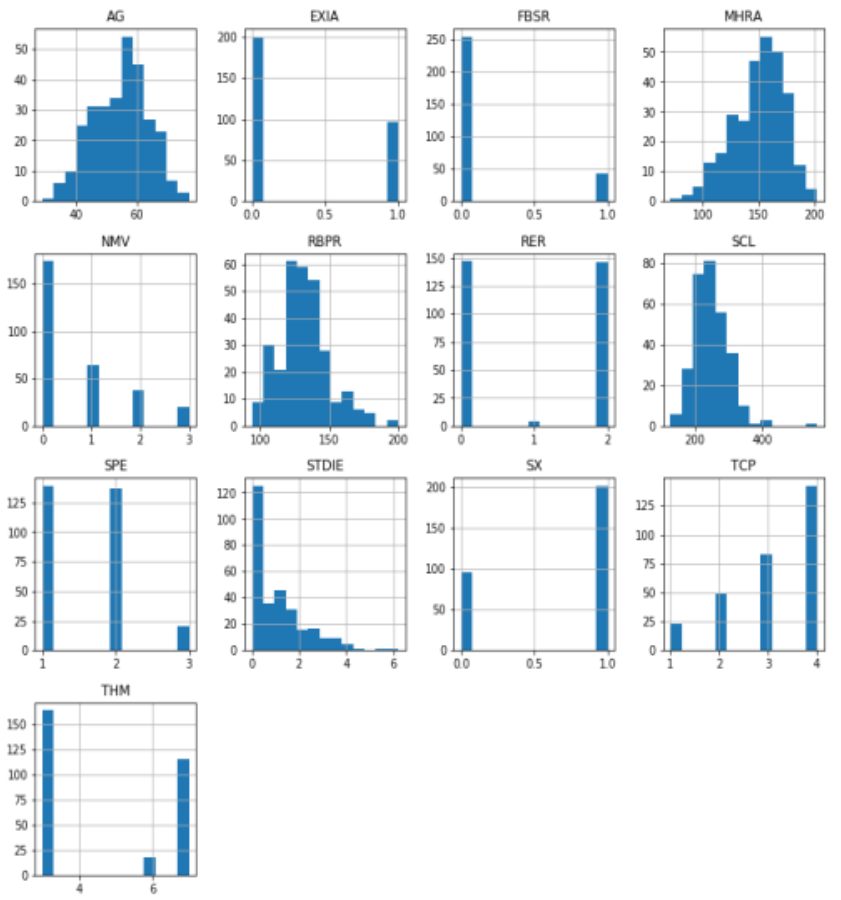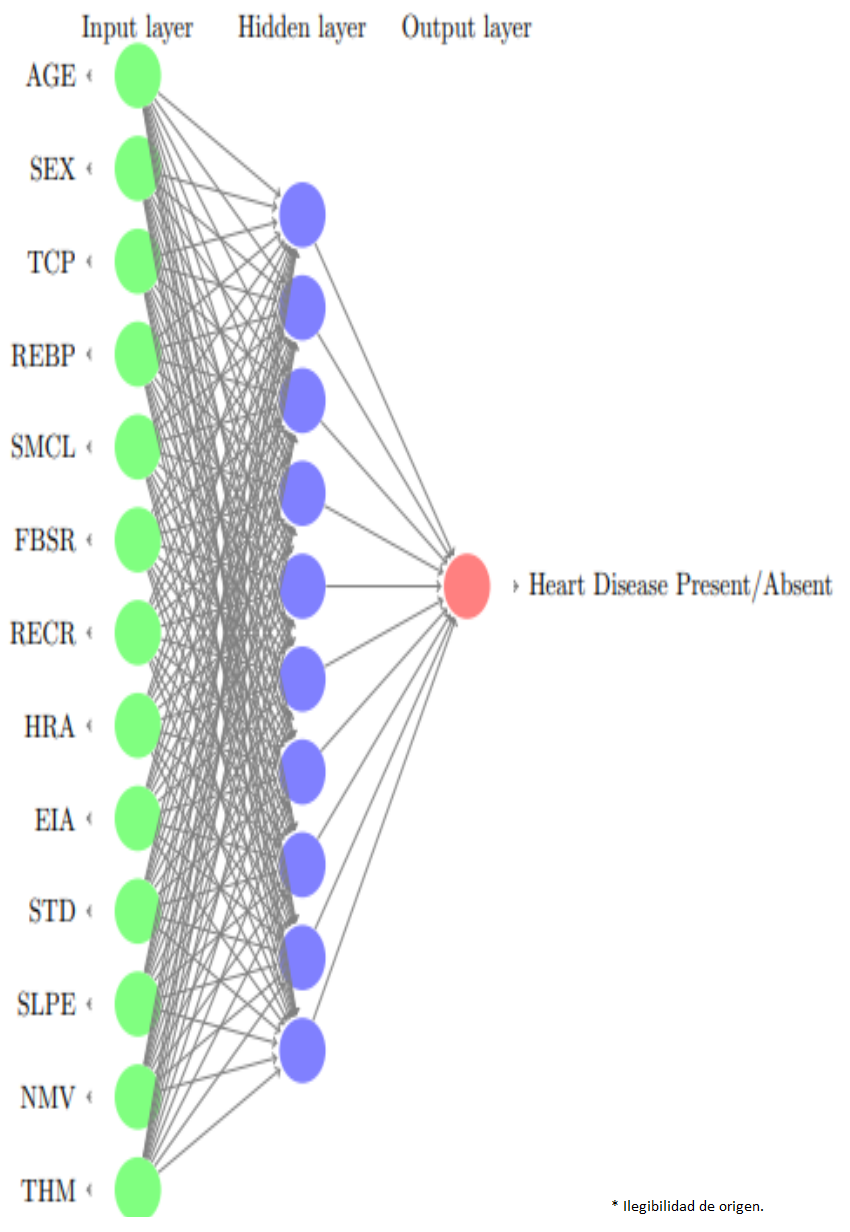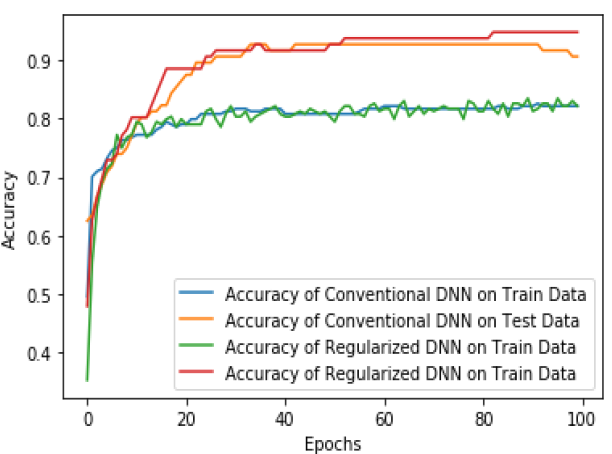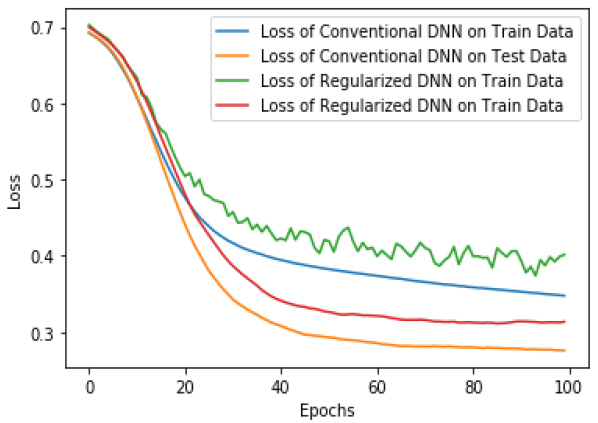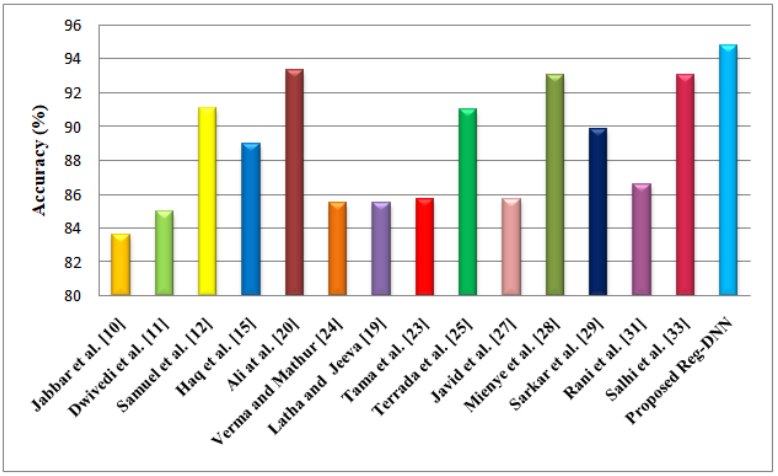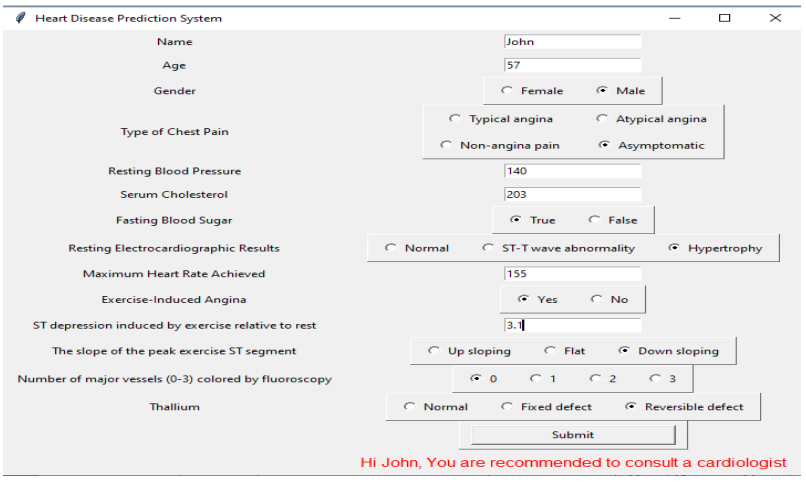1. Introduction
Heart disease is a chronic disease that has a complex diagnosis process. It has many symptoms including chest pain, heartburn, and breathlessness, etc. It is a challenging and important task to predict heart disease at early stages because it can reduce the mortality rate (Kumar & Rani, 2020). Heart disease must be diagnosed at early stages; otherwise, it can lead to life-threatening situations. The patient does not experience severe symptoms until blockage in blood vessels exceeds a level. If the blockage in arteries increases it can also lead to a heart attack (Rajkumar et al., 2016).
Although several methods of predicting heart disease exist, they are not completely accurate. The most precise method of diagnosing heart disease is angiography. But it is a costly and invasive method having certain side effects. So, there is a requirement for non-invasive methods that can diagnose heart disease with increased accuracy. Automated diagnostic systems are an effort in this direction (Saxena & Sharma et al., 2016). Algorithms of machine learning can be used to develop such an automated diagnostic system (Lamba et al., 2021; Sachdeva et al., 2022). Different automated systems have been proposed by researchers to diagnose heart disease. These systems diagnose heart disease with different levels of accuracy. Recent research also shows that deep learning methods can be used to develop such kind of systems (Rani et al., 2021a; Mathur et al., 2020).
The principle of deep learning is based on the working of the brain that uses multiple neurons to extract complex patterns from data. Deep learning can use multiple hidden layers to learn complex patterns of data. Unlike machine learning, DNN does not have to select relevant features. It can perform feature engineering automatically. Deep learning can also work on unstructured data. Researchers have leaned towards DNN to develop automated decision support systems due to the benefits of deep learning over machine learning (Lamba et al., 2022a). In this paper, a heart disease diagnostic system is proposed using a deep neural network. The main motivation behind this work is to diagnose the disease in its initial stages and reduce the mortality rate. Another motivation is the availability of limited medical resources in developing countries. Such kind of automated systems can be useful in remote areas if heart specialists are not available.
The prime objective of this paper is to develop an optimized DNN model that performs well with both training and testing data. Different experiments were conducted on DNN to find out an optimum configuration of the DNN model. Furthermore, regularization techniques were applied to remove overfitting and increase the accuracy of the model. Proposed DNN can reduce the human error associated with diagnosing heart disease. The mortality rate can be reduced by providing appropriate treatment through timely diagnosis. It can act as an advisor to doctors to increase the reliability of diagnosis. Main research contributions of this paper are as follows:
A Regularized DNN has been developed for heart disease diagnosis.
Optimized network configuration is searched by experimenting with different combinations of layers and nodes.
The performance of conventional DNN has been compared to regularized DNN.
The remaining sections of this paper are organized as follows: Section 2 contains a literature review of related work. Section 3 contains a description of the dataset and methodology of the proposed system. The results and discussions are contained in section 4. Section 5 contains the conclusion and future scope.
2. Literature review
Wiharto et al. (2016) proposed a system to diagnose heart disease using K-star algorithm. System achieved sensitivity of 80.1%. Jabbar et al. (2016) used chi-square method for selecting important features. Heart disease was diagnosed using random forest using these features. System achieved 83.60% accuracy. Dwivedi et al. (2018) predicted heart disease using six classifiers artificial neural network (ANN), logistic regression (LR), support vector machine (SVM), decision tree (DT), k-nearest neighbor (KNN) and naive bayes (NB). LR achieved the highest accuracy of 85%.
Samuel et al. (2017) developed ANN model to predict the heart failure. Weights of the network were optimized by using the fuzzy approach to calculate the contribution of the attributes in the prediction. Accuracy of 91.10% was achieved. Acharya et al. (2017) proposed a convolutional neural network-based system to diagnose heart disease using ECG signals and achieved 95.22% accuracy. Liu et al. (2017) developed a hybrid system to diagnose heart disease using C4.5, multilayer perceptron and naive bayes classifiers. Boosting had increased the performance of the system. Relief and Rough set feature selection methods were used. The system achieved 92.59% accuracy.
Haq et al. (2018) used different combinations of feature selection algorithms and classifiers to develop a system for disease prediction. Best accuracy of 89% was provided with LR. David and Belcy (2018) proposed a heart disease diagnosis system using random forest (RF), DT and NB. RF provided the accuracy of 81%. Authors used Statlog heart disease dataset. Malav and Kadam (2018) used ANN (artificial neural network) to predict heart disease. Clustering was performed using K-Means to provide input to ANN. System provided 93.52% accuracy. Miao and Miao (2018) developed a deep neural network based upon multilayer perceptron architecture and diagnosed heart disease with 83.67% accuracy.
Latha and Jeeva (2019) used majority voting with NB, multilayer perceptron (MLP) and RF to propose an ensemble model to predict heart disease with 85.48% accuracy. Ali et al. (2019) proposed a system to diagnose heart disease using a deep neural network. Dimensionality reduction was done using the chi-square method. Grid search method was used to optimize network configuration. The system achieved 93.33% accuracy.
Dutta et al. (2020) identified important features using LASSO method and then performed heart disease prediction using a convolutional neural network. The system achieved 79.5% accuracy. Gárate-Escamila, et al. (2020) performed the dimensionality reduction using chi-square and Principal Component Analysis. An optimized set of features was classified by RF for heart disease diagnosis with 98.7% accuracy.
Tama et al. (2020) developed a system based upon stacked architecture. Relevant features were chosen using particle swarm optimization. Ensemble model was constructed using gradient boosting (GB) and RF classifiers. The system achieved 85.71% accuracy. Verma and Mathur (2019) used correlation and cuckoo search method to selected important features and developed a DNN. Severity of the disease was informed using case-based reasoning. An accuracy of 85.48% was achieved using this approach.
Terrada et al. (2020) used decisison tree, ANN, and Adaboost classifiers to diagnose heart disease and performed experiments on three datasets. ANN provided the best accuracy of 91.47% on Cleveland dataset, 90% on Hungarian dataset and 94% on Z-alizadeh sani dataset. Verma (2020) developed an ensemble model using J48, CART and random forest classifiers. System achieved 84.82% accuracy.
Javid et al. (2020) developed an ensemble model using voting mechanism for heart disease prediction. SVM, KNN, RF, gated-recurrent unit (GRU) and long short term memory (LSTM) classifiers were used to develop the ensemble model. System achieved 85.71% accuracy. Mienye et al. (2020a) partitioned the dataset into different segments. Different models were developed on the partitioned datasets using classification and regression tree (CART). An ensemble model was developed by combining different CART models. System achieved 93% accuracy on Cleveland dataset and 91% accuracy on Framingham dataset.
Sarkar (2020) developed a two-tier optimized prediction system for heart disease. The first level identified the optimal ratio of training and testing data. Perfect rule induction by sequential method (PRISM) was used to generate rules with the best training set. In the second level, the rule set was optimized with parallel genetic algorithm. The system was tested on several datasets. System achieved 89.81% accuracy on Cleveland dataset, 86.21% on Hungarian dataset and 88.34% on Statlog dataset. Mienye et al. (2020b) proposed a two-stage model for diagnosis of heart disease combining sparse autoencoder with ANN. Sparse autoencoder learned the low dimensional features and provided input to ANN. ANN performed the classification based upon the representation learned by sparse autoencoder. System achieved 90% accuracy. Rani et al. (2021b) proposed a hybrid system for heart disease diagnosis. Important features were selected using hybrid genetic and recursive feature elimination algorithm. SVM, NB, LR, RF and Adaboost classifiers were used to develop the system. System achieved maximum accuracy of 86.60% with RF classifier. Rani et al. (2021c) obtained 82.69% accuracy with SVM classifier. Salhi et al. (2021) selected important features using correlation matrix. Authors used ANN, KNN and SVM to diagnose heart disease using selected features. Maximum accuracy of 93% was achieved with ANN.
3. Dataset, methodology and evaluation metrics
3.1. Dataset
Authors performed experiments on Cleveland heart disease dataset available on (University of California, Irvine) repository (https://archive.ics.uci.edu/ml/datasets/heart+disease). Authors selected this dataset because much of the existing research in the literature had used this dataset. This dataset is having records of 303 persons. Seven instances are having missing values. The dataset has 14 attributes.13 attributes in the dataset are features used for the prediction of heart disease. Age, chest pain type, resting blood pressure, fasting blood sugar, sex, electrocardiographic results, serum cholesterol, exercise-induced angina, maximum heart rate, ST depression, slope of the peak exercise, thallium and number of major vessels (0-3) colored by fluoroscopy are prediction features in the dataset (Rani et al, 2022). The distribution of features is shown in Figure 1.
3.2. Methodology
Methodology used in implementing a regularized DNN is discussed in this section. Instances having missing values were removed from the dataset and data was normalized by applying scaling as a part of preprocessing.
DNN gives better performance when trained with a larger dataset, so class balancing was applied to increase dataset size. Hold-out validation method was used with 70% data for training the model and 30% data for testing the model. DNN model for heart disease diagnosis is shown in Figure 2.
There are 3 layers in DNN i.e. input layer, hidden layer, and output layer. Input layer has 13 nodes. All the prediction attributes of the dataset are passed to the input layer. The hidden layer has 10 nodes and the output layer has 1 node. Authors have experimented with the different number of layers and nodes to find out the optimum combination. Authors have used dropout layers to avoid overfitting. Parameters of Reg-DNN method are shown in Table 1.
Table 1 Parameters of Reg-DNN method.
| Parameter | Value |
|---|---|
| Number of layers | 3 |
| Nodes in input layer | 13 |
| Nodes in output layer | 1 |
| Nodes in hidden layer | 10 |
| Dropout | 0.3 |
| Batch Size | 30 |
| Epochs | 100 |
Output of a DNN is defined by using the equation 1:
Here f is activation function, w is weight of nodes, x is input and b is bias. Activation function is responsible for deciding which neurons will be activated in DNN. Relu (rectified linear activation function) is used in the input layer and hidden layer (Jabbar et al., 2016). Relu function is a non-linear function that can easily learn the complex patterns in data (Shankar et al., 2020). It returns the positive value as it is and converts a negative value into a positive value as defined by the equation 2:
Sigmoid activation function is used in the output layer (Verma & Mathur, 2020). Sigmoid function is defined by the equation 3:
Network was initialized with random weights and trained with 100 epochs and batch size 30. Heart disease diagnosis is a binary classification problem, so, binary cross-entropy loss function was used which is defined by the equation 4:
Where A is actual output and B is predicted output.
Model was regularized to prevent overfitting. Regularization penalizes weights assigned to nodes to remove overfitting. Proposed Reg-DNN is developed by applying Dropout and L2 regularization.
Dropout method of regularization randomly deactivates some nodes in the selected layer at each iteration. Dropout of 0.3 has been used in Reg-DNN.
L2 regularization updates the cost function of DNN by adding a regularization term. Cost function calculates the error between actual and predicted values (Rahangdale & Raut, 2019). L2 regularization updates the cost function as given by the equation 5:
Adding the regularization term reduces the value of weight matrices and hence reducing overfitting. L2 regularization leads the weight values towards zero.
3.3. Evaluation metrics
System was evaluated using following performance metrics:
Accuracy: Accuracy measures the ability of a system to make true predictions as given in equation 6. We always strive to increase accuracy.
Where TP (true positive) and TN (true negative) are correct predictions whereas FP(false positive) and FN (false negative) are incorrect predictions done by the system.
Loss: In DNN we always strive to minimize error. This error can be calculated using loss function.
Binarycross-entropy loss function is used for calculating loss in binary classification problems. Loss gives a measurement of the difference between actual and predicted probability distributions. Loss can be calculated as given in the equation 7 (Sachdeva & Bathla, 2022).
Where M is total number of samples, xi is output class label for sample i, log(p(xi)) is log probability of class label of sample i.
In addition to the above evaluation metrics, receiver operating characteristic curve (ROC) of the model is drawn to demonstrate the ability of the system in performing correct diagnosis. In ROC chart, false positive rate (FPR) is taken on the x-axis and true positive rate (TPR) is taken on the y-axis. ROC chart having TPR of 1 and FPR of 0 is an ideal ROC curve. The more area under the curve, the more accurate diagnosis will be performed (Lamba et al., 2022b).
4. Results and discussion
The efficiency of Reg-DNN was evaluated by using hold-out validation method. 70% data was used for training the model and 30% data was used for testing the model. Two types of models of DNN were created: Conventional DNN and Regularized DNN.
Experiments were performed with both types of models to analyze the effect of regularization on model accuracy. Regularized DNN was developed by applying Dropout and L2 regularization. Model accuracy and loss with conventional and regularized DNN are shown in Table 2.
Table 2 Performance of deep neural network models on heart disease dataset.
| DNN Model | Accuracy | Loss |
|---|---|---|
| Regularized DNN (Test Data) | 94.79 | 31.34 |
| Regularized DNN (Train Data) | 83.03 | 37.46 |
| Conventional DNN (Test Data) | 90.62 | 34.69 |
| Conventional DNN (Train Data) | 83.03 | 27.57 |
In the development of DNN, it is necessary to ensure that overfitting does not occur. Inappropriate network configuration leads to overfitting of the model. When overfitting occurs network is highly fitted with training data and gives good accuracy with training data but gives a poor performance with testing data.
In our experiments, the problem of overfitting was overcome by regularization. Accuracy and loss of conventional DNN and regularized DNN over number of epochs is shown in Figure 3 and 4. Figure 3 and 4 indicate that regularized DNN increased the accuracy and reduced loss for test data. ROC chart for conventional DNN and regularized DNN is shown in Figure 5. AUC of Regularized DNN is 0.963 whereas AUC of conventional DNN is 0.954. ROC chart indicates that Regularized DNN has shown better performance than conventional DNN.
Proposed Reg-DNN performed better than many systems already existing in the literature for diagnosis of heart disease. Performance of the proposed method was compared to the performance of the existing systems as shown in Table 3. A comparison of the accuracy of the proposed Reg-DNN with existing systems is shown in Figure 6.
Table 3 Comparison of the proposed system with existing systems.
| S.No. | Study | Year | Dataset used | Method | Accuracy(%) |
|---|---|---|---|---|---|
| 1 | Jabbar et al. | 2016 | Cleveland | Random forest classifier. | 83.60 |
| 2 | Dwivedi et al. | 2016 | Cleveland | Logistic regression | 85 |
| 3 | Samuel et al. | 2017 | Cleveland | Artificial neural network optimized by fuzzy approach | 91.10 |
| 4 | Haq et al. | 2018 | Cleveland | Logistic regression | 89 |
| 5 | Ali at al. | 2019 | Cleveland | DNN optimized by chi-square | 93.33 |
| 6 | Verma and Mathur | 2019 | Cleveland | Deep learning with features optimized by correlation and cuckoo search method | 85.48 |
| 7 | Latha and Jeeva | 2019 | Cleveland | Ensembled model using NB, MLP and RF | 85.48 |
| 8 | Tama et al. | 2020 | Cleveland | Two tier ensemble method | 85.71 |
| 9 | Terrada et al. | 2020 | Cleveland | Artificial neural network | 91 |
| 10 | Javid et al. | 2020 | Cleveland | Ensmebled model using majority voting | 85.71 |
| 11 | Mienye et al. | 2020 | Cleveland | CART | 93 |
| 12 | Sarkar et al. | 2020 | Cleveland | Two-tier PRISM optimized with parallel genetic algorithm | 89.81 |
| 13 | Rani et al. | 2021 | Cleveland | Random forest | 86.60 |
| 14 | Salhi et al. | 2021 | Cleveland | Artificial neural network | 93 |
| 15 | Proposed Reg-DNN | 2021 | Cleveland | Regularized deep neural network | 94.79 |
Authors also developed a graphical user interface for an intelligent system for heart disease diagnosis so that system can be easily used by anyone. Graphical user interface of the system is shown in Figure 7. Clinical parameters of the patient are accepted through this GUI and input is provided to the developed model. Model predicts whether patient is suffering from heart disease or not.
Finally, the user is informed whether the person should consult a cardiologist. Proposed system can be very helpful for diagnosing heart disease because of its increased accuracy. It can help health professionals to take the right decision at the right time.
6. Conclusions
In this paper, an intelligent system using a regularized deep neural network (Reg-DNN) has been developed for heart disease diagnosis. L2 regularization and dropout methods are used to prevent overfitting. The performance of the proposed system has been evaluated using accuracy, loss, AUC and ROC. Reg-DNN has given 94.79% accuracy and 29.25% loss. The proposed system can be used as an assistant by doctors to diagnose the disease. It can reduce the human error associated with the diagnosis process and hence reduce the mortality rate.
In future, authors have planned to collect the real-time data through the interface shown in Figure 7 and assist the doctor. Further, authors have also planned to increase the accuracy of the system by searching for optimum configuration of the network by using more sophisticated algorithms like genetic algorithm.
Authors have also planned to collect clinical parameters of patients automatically by combining the system with IoT. Authors have planned to find out optimum prediction features for heart disease diagnosis by consulting a cardiologist. Besides, the authors have planned to enhance the system by suggesting some precautionary measures and treatments for the patients.











 nueva página del texto (beta)
nueva página del texto (beta)

